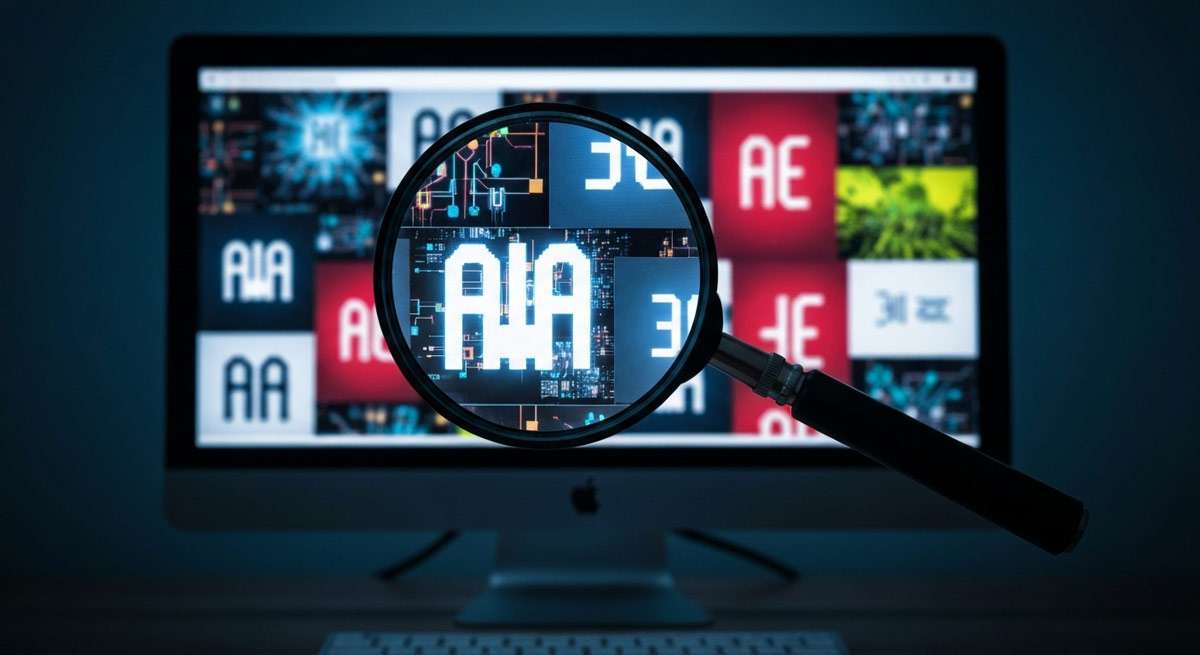Key Highlights
-
Artificial intelligence has made it easy to create convincing fake images, making it harder to trust what you see online.
-
The rise of generative AI challenges the authenticity of digital media, especially on social media platforms.
-
Learning common signs of AI generation, such as odd details and inconsistent lighting, is a key part of media literacy.
-
AI image detection tools can help, but they are in a constant race against improving AI technology.
-
New image authentication standards like Content Credentials offer a way to verify the origin of real photos.
Introduction
In a world filled with stunning visuals, the line between real and fake has become increasingly blurry. Thanks to the rapid advancement of artificial intelligence, particularly generative AI, creating lifelike images from a simple text prompt is now possible for anyone. This new reality raises a critical question: how can you be sure a photo is authentic? This quest for reliable image authentication is more important than ever as we navigate a digital landscape where seeing is no longer always believing.
The Changing Landscape of Image Authenticity in the AI Era
The rise of AI has fundamentally altered the digital media environment. With generative artificial intelligence, anyone can produce a realistic AI image, which then spreads rapidly across social media platforms. This has a significant impact on journalism, where the authenticity of photo evidence is crucial for public trust. Even respected journalists have created and shared synthetic images, blurring the lines for the public.
This new landscape presents major hurdles for image authentication. The sheer volume of AI-generated content makes manual verification impossible, and the technology is evolving so quickly that AI image detection methods struggle to keep up. Let's explore what makes this process so difficult and why your trust in visual evidence is being tested.
What Makes Image Authentication Difficult Today?
One of the greatest challenges in authenticating images today is the sophistication of generative models. These AI systems have learned from billions of real photos, allowing them to create fakes that are incredibly difficult to spot with the naked eye. What used to be a simple check for six-fingered hands has become a much more complex task.
Furthermore, the speed at which disinformation can be created and spread is staggering. A fake image can go viral on social media in minutes, reaching millions before any fact-checking can occur. This democratizes the production of believable deepfakes, which can be used to mislead the public or discredit real events.
Finally, the context surrounding an image is often lost as it's shared and re-shared. Without knowing the original source, determining the authenticity of a photo becomes a significant challenge. This erosion of provenance in digital media makes the job of image detection and verification much harder for everyone, from an average user to a professional analyst.
Simple Chart For Spotting AI Images Like A Pro At AiorNot.USWhy Trust in Visual Evidence Is More Challenging Than Ever
Your ability to trust visual evidence is eroding because of the sheer flood of fake images online. Social media algorithms, which prioritize engagement over reality, amplify this problem. When you see photorealistic but completely fabricated images of political figures or major events, it naturally sows seeds of doubt about all visual content. This makes you more cynical and less likely to believe even real photos.
The issue is not just about obviously satirical images; it's about the subtle fakes designed to spread fake news. For example, an AI-generated image of Donald Trump with Black supporters was created to mislead, and the creator defended it by saying they weren't a photojournalist. This blurs the lines of responsibility and makes it harder for you to know who to trust.
In response, efforts like the Content Authenticity Initiative are working to create standards for transparency. However, without widespread adoption and public awareness, discerning real from fake remains a massive hurdle. The existence of a powerful AI image detector is not enough when anyone can create and share convincing fakes with ease.
Common Signs of AI-Generated Images
While AI image generators are getting better, they still make mistakes. You can learn to spot these synthetic images by looking for specific clues. Often, an AI image will contain unusual or inconsistent details that a real photograph would not have. Paying close attention to these small errors is your first line of defense in AI image detection.
These giveaways can range from strange textures and repeating patterns to illogical lighting and shadows. By training your eye to look for these anomalies, you can get better at distinguishing fake images from authentic ones. Let's look at some specific visual patterns and digital clues that can help you authenticate a photo.
Good Read: 7 Signs For Identifying An AI ImageVisual Patterns and Artifacts in Synthetic Photos
When conducting an image analysis, your eyes are a powerful tool for spotting the work of generative AI. Many synthetic images contain visual inconsistencies that give them away upon closer inspection. These artifacts are often subtle, but once you know what to look for, they become easier to identify compared to real images.
Pay special attention to complex parts of an image, as this is where AI often struggles. Elements like hands, text, and reflections can reveal telltale signs of manipulation. An AI image detector works by looking for these patterns, but you can do it too.
Look for these common visual giveaways:
-
Unusual Details: Look for misplaced or misshapen features, especially on people. AI still struggles with fingers, hands, and ears.
-
Inconsistent Lighting: Check if shadows and highlights on different objects match the direction of the light source.
-
Background Anomalies: Backgrounds might be overly simplistic, strangely blurred, or contain objects that don't make sense in the scene.
-
Unnatural Textures: Hair, skin, and clothing might have a repetitive or overly smooth pattern.
-
Jumbled Text: Any text in the image might be misspelled, nonsensical, or have distorted letters.
Digital Clues Hidden in the Metadata
Beyond what you can see, every digital photo contains hidden information called metadata. This data can include details like the date and time the photo was taken, the camera settings used, and sometimes even the GPS location. Examining this metadata is a useful step in checking a picture's authenticity. On a computer, you can often right-click an image and select "Properties" to view some of this information.
However, relying solely on metadata to spot fake photos has its limits. This information can be easily edited or stripped away, meaning it's not a foolproof method. A person creating a fake image could alter the metadata to make it appear more legitimate.
This is where technologies like digital watermarks come into play. These are invisible markers embedded within an image's data that are harder to remove than standard metadata. While not a complete solution, they add another layer of security, working alongside other methods to help verify authenticity and track a photo's origin.
Tools and Methods for Verifying Image Authenticity Online
If you're unsure about a photo, several online tools can help you check its authenticity. AI image detection websites like "AI or Not" and "Sightengine" allow you to upload an image and get an analysis of whether it was likely AI-generated. A reverse image search can also help you trace a photo's origins and see where else it has appeared online.
While no single image detection tool is perfect, using a combination of these methods can provide valuable clues. The field of AI image detection is a constant cat-and-mouse game, with detectors trying to keep up with more advanced image generators. Let's examine some of these techniques more closely.
Advanced Software and Techniques for Detecting AI Manipulation
Modern AI image detection relies on powerful algorithms trained to spot the subtle fingerprints left behind by generative models like Stable Diffusion or Midjourney. These software tools go beyond what the human eye can see, analyzing pixel patterns, digital noise, and other artifacts to determine if an image is synthetic. They are a critical part of the fight against disinformation.
Many of these tools are available online, offering a first-pass analysis for suspicious images. While some have free versions with limitations, they provide a good starting point for verification. These platforms are constantly updated as the algorithms behind image generators evolve.
Here are a few methods and tools you can use for AI image detection:
| Method/Tool | Description |
|---|---|
| AI or Not | A popular tool that analyzes an uploaded image to predict if it was created by AI. Visit Here >> |
| Sightengine | A content moderation service that includes a free AI image detector on its website. Visit Here >> |
| Reverse Image Search | Services like Google Images let you search with an image to find its source and other contexts where it has been used. Visit Here >> |
| Metadata Viewers | Applications or online tools that display an image's EXIF data, which can reveal camera details, date, and time. Visit Here >> |
The Role of Blockchain, Watermarks, and Metadata Analysis
While detection is reactive, a more proactive approach involves securing images at the moment of creation. Digital watermarks are a key part of this strategy. Unlike visible watermarks, these are invisible codes embedded in the image's pixel data. Companies like Digimarc and Adobe have developed durable watermarks that can survive resizing and copying, helping to prove authenticity.
Metadata analysis is another piece of the puzzle. While basic metadata can be faked, new standards combine it with cryptographic signatures to create a verifiable record. This approach moves beyond simple data to create a secure chain of custody for a digital file.
This is where blockchain technology comes in. By creating a tamper-proof ledger, blockchain can be used to log an image's origin and any subsequent edits. This creates a permanent, verifiable history that confirms the photo's authenticity from capture to publication, providing a much higher level of trust than metadata alone.
Expert Approaches to Identifying Real vs. AI-Generated Photos
When professionals need to determine the authenticity of an image, they don't just rely on a single tool. They use a combination of forensic analysis and established best practices. This is especially important as real photographs are increasingly challenged on social media and in legal contexts. Their goal is to build a comprehensive case for or against a photo's legitimacy.
This multi-faceted approach is necessary because of the legal and ethical gray areas surrounding AI-generated content. As these images become more common, questions about copyright, defamation, and evidence tampering arise. Experts are developing rigorous methods to provide clear, defensible conclusions about authenticity.
Forensic Analysis and Best Practices
Forensic analysis of digital media is a detailed process that goes far beyond a simple visual check. Experts begin by examining an image's metadata for any inconsistencies, such as a creation date that doesn't match the event depicted. They look for clues that suggest the data has been altered or stripped from the file.
Next, they perform a deep dive into the image's pixels. Using specialized software for image detection, they search for telltale signs of digital manipulation, such as compression artifacts, inconsistent noise patterns, or the unique fingerprints left by AI generation models. This level of analysis can uncover alterations that are completely invisible to the naked eye.
Finally, experts consider the image's provenance—its origin and history. They use reverse image search and other tools to track where the photo first appeared and how it has been used across the internet. Combining these technical findings with contextual research allows them to make a confident judgment about a photo's authenticity.
How Professionals Build Trust in Image Evidence
To combat the erosion of trust caused by AI, professionals in journalism and other fields are embracing new technologies and standards. The goal is to move from simply detecting fakes to proactively proving authenticity. A leading effort in this area is the Content Authenticity Initiative, which has developed an open standard called C2PA.
This standard allows cameras from manufacturers like Leica, Sony, and Canon to embed secure "Content Credentials" into a photo at the moment of capture. These credentials act like a digital nutrition label, providing a verifiable history of the image's origin and any edits made to it. This technology helps uphold journalistic standards by providing transparent, trustworthy evidence.
Building trust is a multi-step process that involves technology, education, and industry-wide adoption. Key steps professionals are taking include:
-
Adopting C2PA-compliant cameras to capture verifiable images.
-
Updating website content management systems to display Content Credentials.
-
Educating the public on how to recognize and interpret these credentials.
-
Advocating for legislation that requires clear labeling of AI-generated content.
Conclusion
In the quest to authenticate real images in the age of AI, understanding the various methods and tools available for verifying image authenticity is crucial. As we've explored, the landscape of image trustworthiness is evolving, making it essential to stay informed about the signs of AI-generated content and the advanced techniques for detecting such manipulations. By employing forensic analysis and leveraging tools like blockchain and metadata, we can better navigate this complex digital environment. Remember, fostering trust in visual evidence not only enhances our perception of reality but also safeguards against misinformation. For personalized advice on how to improve your image verification methods, don't hesitate to reach out for a free consultation with our experts!
Frequently Asked Questions
Can metadata really prove if an image is genuine or AI-generated?
Metadata alone cannot definitively prove authenticity because it can be easily altered or removed. While image analysis of metadata is a useful starting point in AI image detection, it is not a foolproof method for spotting fake images. Secure systems that cryptographically sign content at creation offer much stronger proof.
Are there reliable apps for spotting fake photos in real time?
Some apps and websites act as an AI image detector, but their reliability varies. These tools use algorithms to find signs of AI generation, but they are in a constant race against improving AI. No image detection tool is perfect, so it's best to use them as one part of your verification process for distinguishing real images.
What are the latest policies to fight AI-generated disinformation in images?
Currently, there is no comprehensive federal law in the U.S. for labeling AI content. However, numerous states are proposing their own AI policies to combat fake news and disinformation. This patchwork of regulations may pressure the federal government to create a uniform national standard for ensuring authenticity and improving content moderation.
Get Better At Spotting AI Images By Playing The Game At AiorNot.US >>



